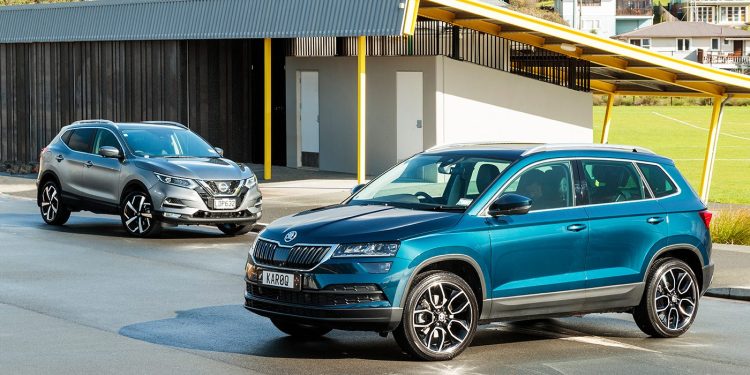2018 Skoda Karoq vs Nissan Qashqai comparison
Words Kyle Cassidy | Photos Tom Gasnier
SUVs keep multiplying, and here’s another new one from Skoda, the Karoq. Like Qashqai, it has an odd name, but will prove popular. So which is better?
Skoda is cottoning on to a market trend called the SUV. It’s tried the weird and wacky with the likes of the Yeti, and Roomster and while they had a certain appeal, they were solutions to questions few asked. These Euro-centric offerings were true to Skoda form, but the masses demand generic SUVs, and so the Czech’s are now delivering.

Last year we had the Kodiaq which made waves and though the desirable models are reasonably pricey, it’s selling well. However, it’s this little jigger that will introduce Skoda to more people, the Karoq. It lands with ‘maximum retail pricing’ ranging between $39k and $49k and is initially a three-model range with two petrols and a diesel offered. Here before you is the Style TSI, a $42,990 front-driver with five seats powered by a 1.5-litre turbo engine. It’s a newcomer to the class, one that the Nissan Qashqai has been doing well in for the best part of a decade. Nissan has embraced the SUV in all of its forms to the point where the only cars it sells these days are sporty numbers. Qashqai has recently received an update, so how do these two rate?
Like a Kodiaq but smaller
The Karoq replaces the Yeti but whereas that was, well, kind of abominable, Karoq has more appeal. Some Skoda designs have been challenging but its SUV styling is right on. And the Karoq looks a lot like the Kodiaq from the front, only it’s shorter both overall (4382 v 4697mm) and between the wheels (2630 v 2791mm). It sits on the same platform but where the Kodiaq uses the 1.4 TSI, this gets a new 1.5. It makes the same 110kW and 250Nm, but is an engine primed for efficiency and features, among other things, cylinder deactivation.
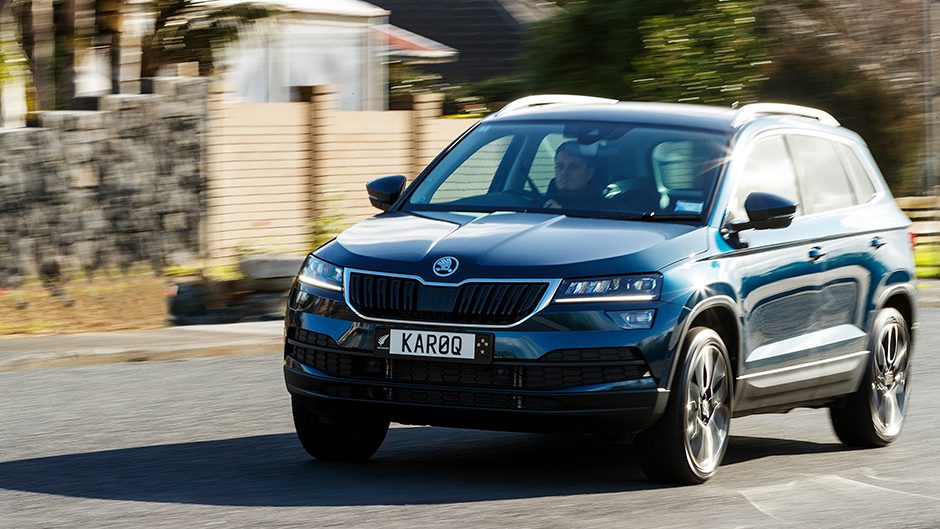
Pots two and three will nod off to save fuel, and Skoda says this can help conserve up to 0.5L/100km. You can’t tell it’s slipped into deactivation mode save for the little indicator on the trip computer, and the cylinders drop in and out frequently during steady state cruising, both at urban and motorway speeds. Skoda claims overall consumption at just 5.1L/100km, but during our test period the average was in the low eights. It’s paired with a seven-speed twin-clutch which by default is programmed to upshift early and utilise the low-end torque production. This is delivered quickly from just above idle, and maximum pull is said to be streaming by 1500rpm. The petrol is a front driver, while the available diesel, a 2.0-litre with 110kW and 340Nm, gets AWD and a slightly more sophisticated rear suspension set-up, whereas a torsion beam does the job here.
QQ renewed
Qashqai’s look has received the usual mid-cycle makeover with lights, bumpers and wheels refreshed. Inside there are new seats, steering wheel and gear knob, and AEB and collision warning have been added. They’ve also rejigged the suspension to lend more control. The 2.0-litre atmo four carries over and is paired with a CVT to drive the fronts. It’s the only powertrain offered but there are three model grades ranging in price from $36,270 to the $43,700 N-Tec featured.
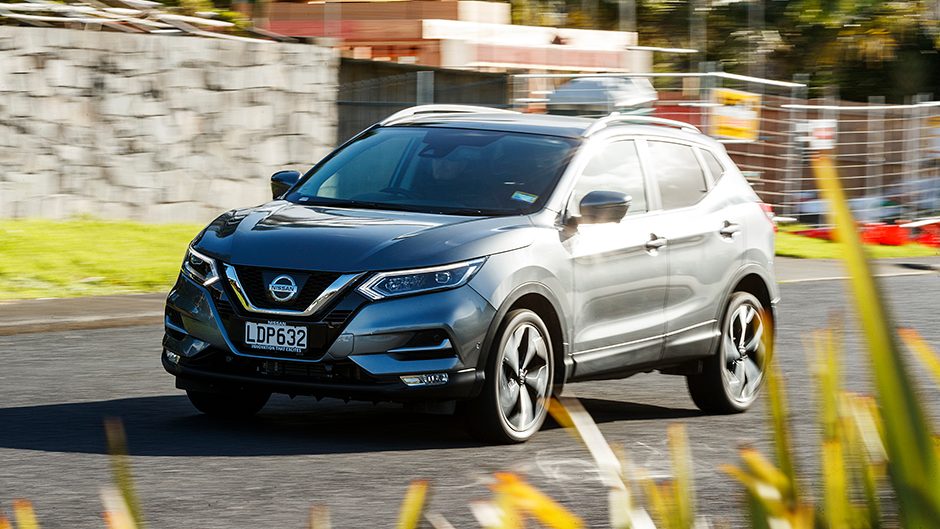
The 2.0 musters 106kW but without any induction assistance the crank needs to spin to make the torque, the peak of 200 registering at 4400rpm. Paired with the CVT, it’s a smooth unit and the factory quotes gas use at a rate of 6.9L/100km. We saw nine but it makes do with 91 where the Karoq drinks 95. Where 2500rpm is quite sufficient to get the Karoq moving through traffic, the torque is not as forthcoming from the Qashqai, needing at least 3000rpm, sometimes 4000 to get up to pace, but then the CVT soon settles the engine and sets it to simmer along at 1500rpm.
Town and country
These are sound operators around town, both smooth in terms of progress, the Qashqai a nose ahead in suppleness over the edges, while the Skoda has lighter steering and a better turn around circle. They’ve improved the Qashqai’s electric assistance to rid it of a strong will to return to centre, though the action is still not as fluid as the Skoda’s. The stop/start mechanism in the Karoq is quite active, and restarts aren’t so polished but it can be switched off. The Nissan’s CVT is smooth off the mark but, low speed refinement apart, we prefer the twin-clutch in the Skoda as its eco-minded ways can be remedied via the transmission’s Sport mode when you require a bit more haste from the powertrain.
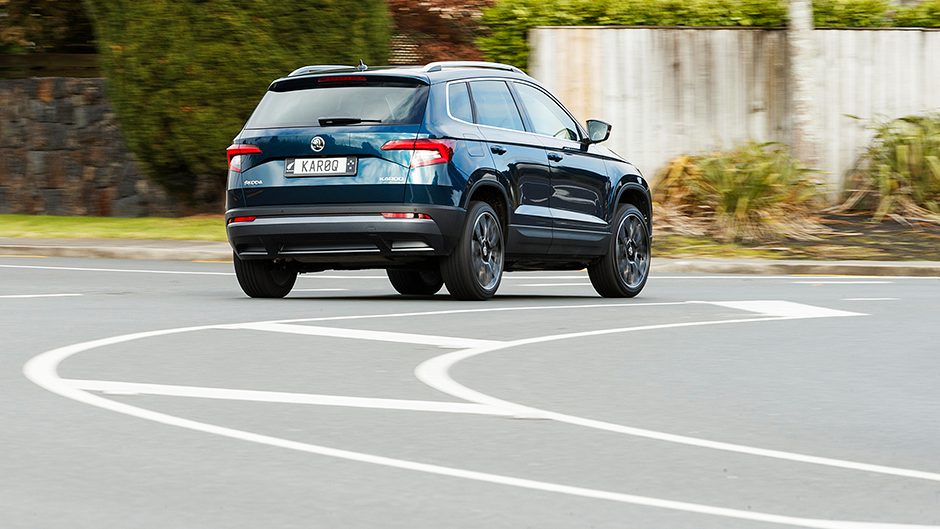
Despite its simple rear end arrangement, this Karoq keeps itself in shape when pressed through a series of twists. Midcorner bumps aren’t an issue and so the steering remains accurate. The electronics ensure the torque doesn’t corrupt the front wheels, although expect some axle tramp off the line if it’s a bit greasy under the treads and your right foot’s a bit twitchy. The Qashqai too is a well mannered machine, its ride not upset by the firming of the suspension as part of the upgrade. The steering is slower and heavier compared with the helm in the Skoda but both hold firm in a curve thanks to the generous rubber each wears.
The twin-clutch keeps the 1.5 whipped up, it giving its best in the three to six thou zone, much like the 2.0-litre in the Qashqai. But the superior engine response, thanks in part to the slick acting gearbox, makes the Skoda the better wagon to drive. Neither is particularly quick when it comes to passing, but you get there eventually.
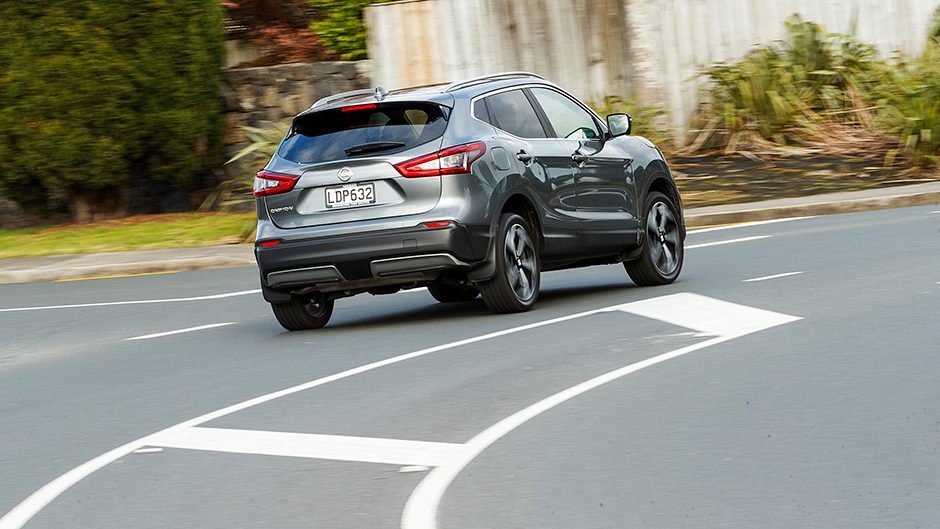
Karoq a real Skoda
As in it delivers bigly on interior space. Up front the cabin is a spacious affair. You feel a little hemmed in at the wheel of the Qashqai, but the seats are superior with better form and comfort, and they’re heated too. The Karoq presents a more modern cabin and its central screen is bigger with a richer image and there’s more functionality to the system, including CarPlay and Android Auto, both missing in the Nissan.
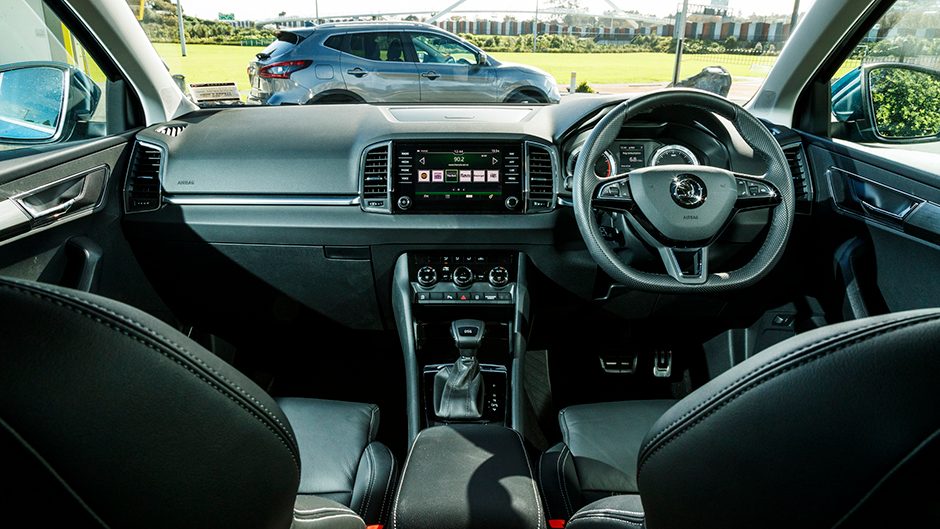
The Qashqai has a surround-view camera, handy for tight parking spots but the small screen size and the slightly fuzzy image render the feature frustrating. And it’s the same for the sat nav, the map harder to read and navigate around than that in the Skoda, which you can manipulate easily with swipey/pinchy motions. Both have a mix of soft and harder plastics throughout the cabin, and handy storage but there’s more of the latter in the Skoda, which is also constructed with more rigour.
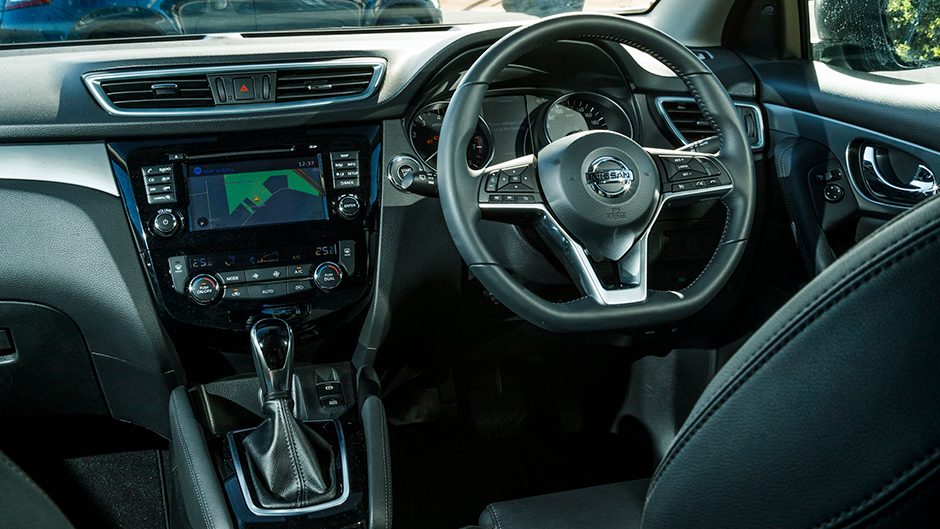
There’s not much in it for rear leg room, though the entry and exit are better in the Skoda, and seat comfort is improved by a recline function on the seat backs. But it’s on luggage space that the Karoq scores a big win, not just over the Qashqai, but in the class in general. This Karoq is fitted with the optional Plus Package which adds the removable rear seats along with leather trim and the sports steering wheel and shiny pedals. It’s a $2500 pack that many will consider. To increase boot space, the ‘VarioFlex’ seats can either be slid forward, folded up or completely removed, turning Karoq into a delivery van.
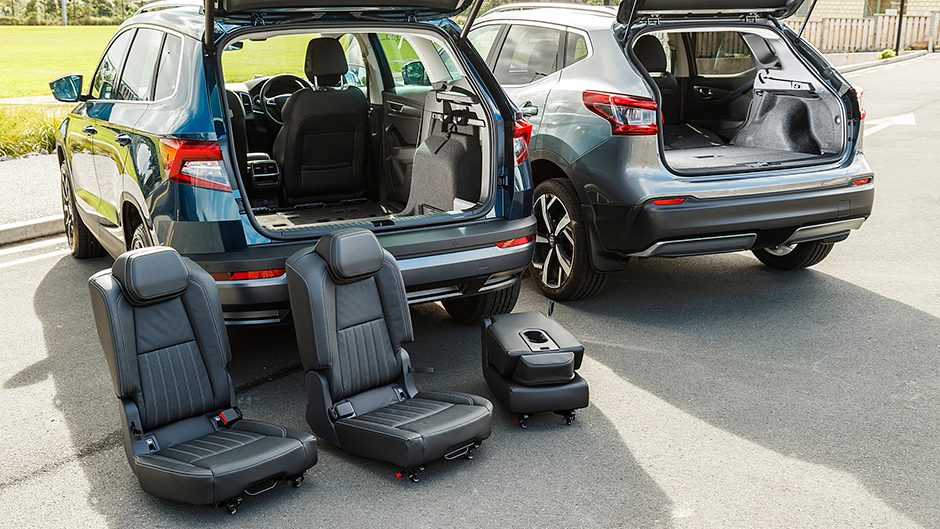
It all sounds very practical, however, the conversion is time consuming, each of the three seats needing to be folded individually, and they are fairly weighty. Replacing them is fiddly too. You can remove the centre seat should you find a need (maybe if you want the dog to have easy access to the boot from the cabin?) and the two outer seats can be positioned inboard a little. It’s another ‘simply clever’ solution that just might solve your problem. With the standard seat, luggage volume is quoted at 521L, expanding to 1630L.
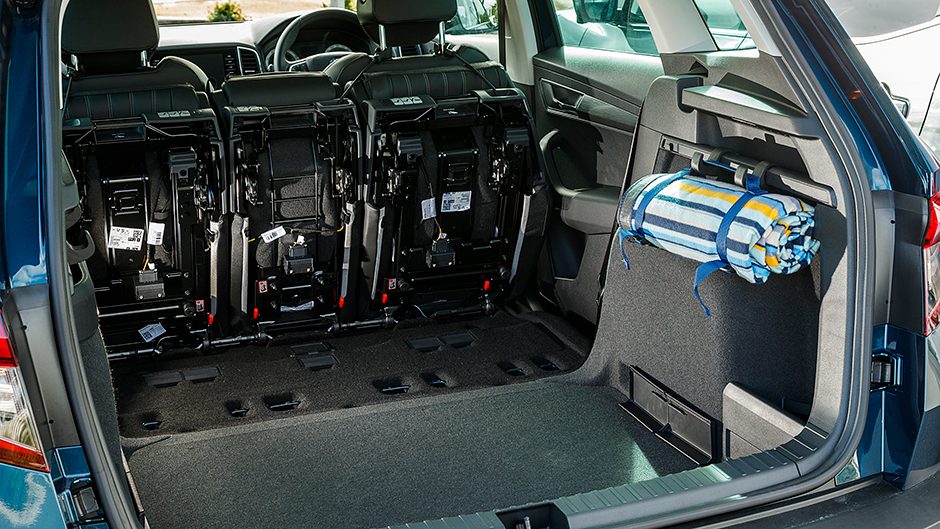
With the VarioFlex rear seats, the figures are 479L, 588L with the seats slid forward, 1605 with them flipped over and out to 1810L with them removed. The QQ has a smaller boot, rated at 430L. It’s split folding system is conventional but quick, though its variable floor system isn’t that smart.
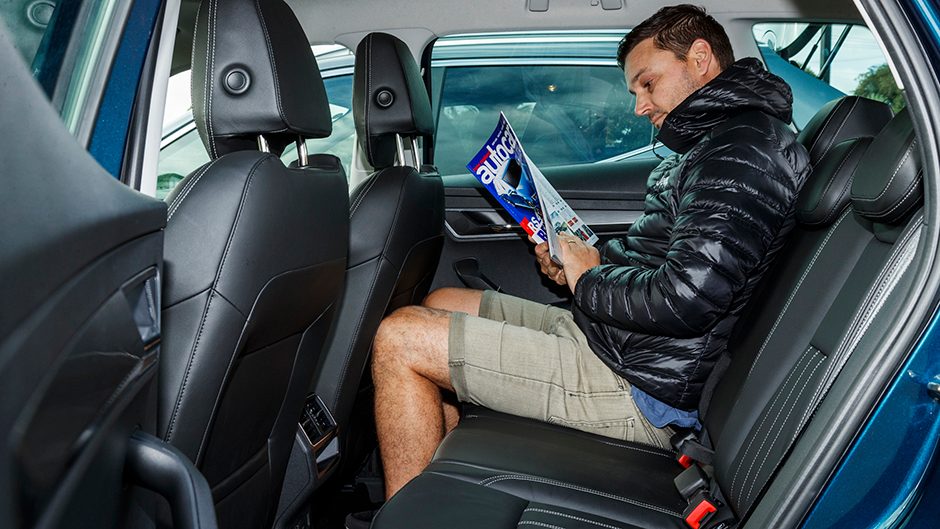
Both are covered for three years/100,000km, the Skoda with service intervals of up to two years or 30,000km. Its tow rating is 1500kg, 300 more than the Nissan’s. There are a few options to choose from with Skoda but the Style is well specified, with only the Plus Package worth considering. Both have the active safety features including AEB, lane departure and blind spot monitoring, though the Karoq has active lane keeping and adaptive cruise as standard.
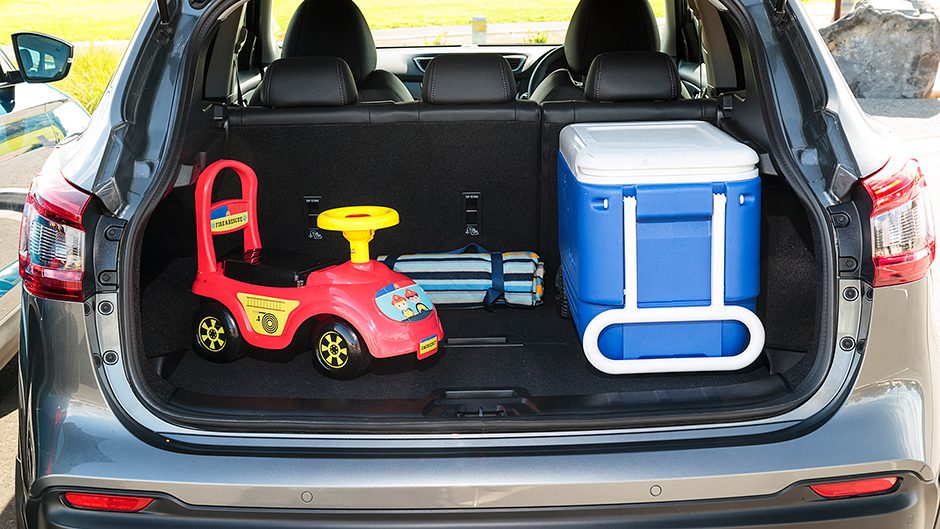
Nissan will add a Ti model later in the year which will have yet more spec including the missing active cruise. But otherwise the N-Tec is better specified at the money with a park assist feature, and adaptive high beams, while seat heaters and a glass roof are standard. Both get LED lights, sat nav, keyless entry and dual zone air.
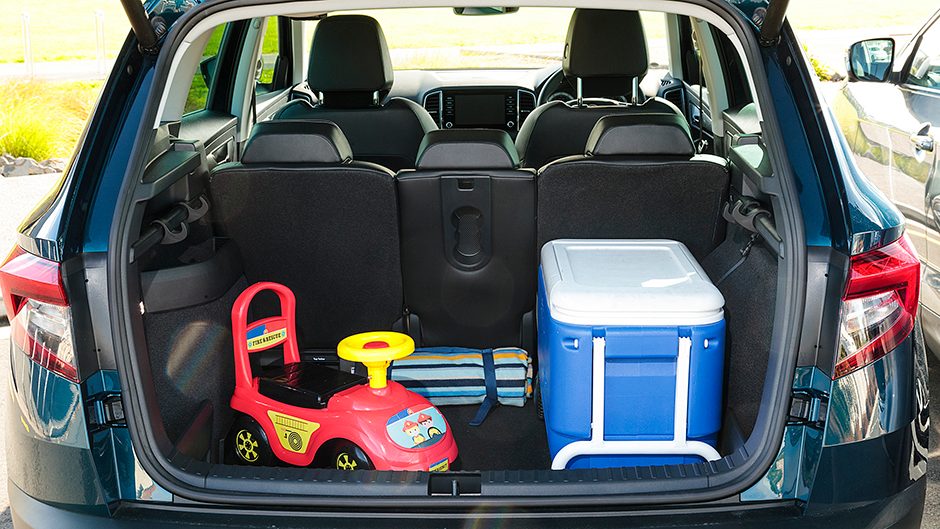
Which is it?
We are going with the Karoq here, another sound offering from Skoda. Its powertrain and packaging are superior, while the spec is good for the money. The Qashqai is also well spec’d, rides well and is a calm commuter. It looks good too but the practicalities of the Skoda, and the drive see it amass more points overall.


